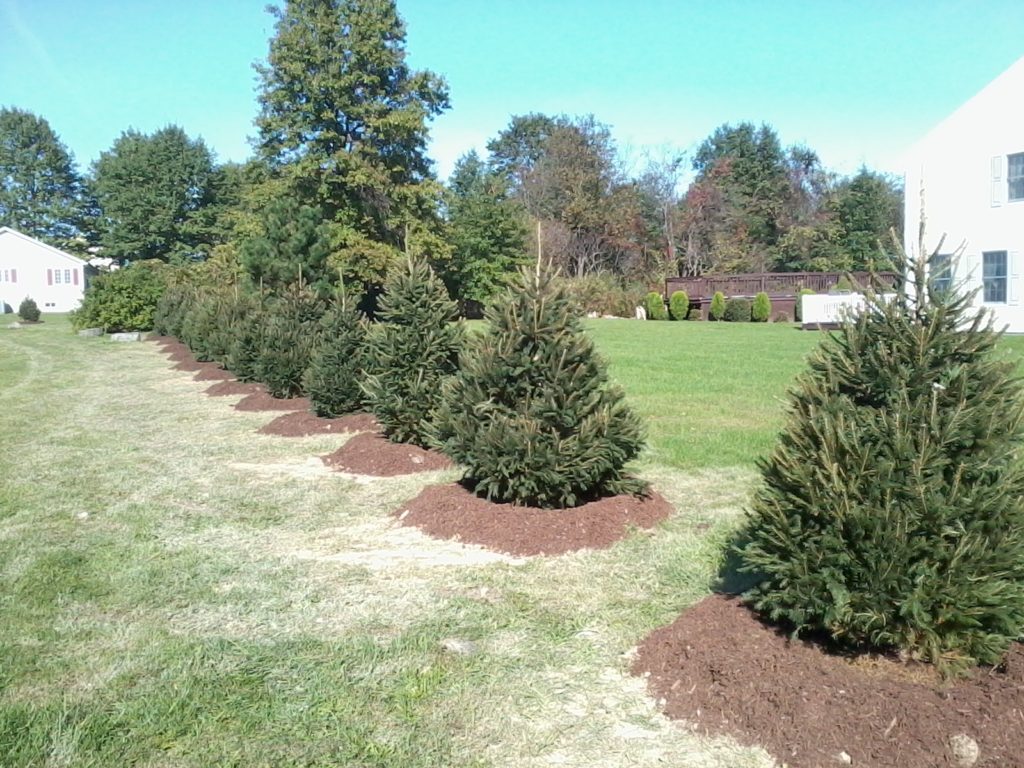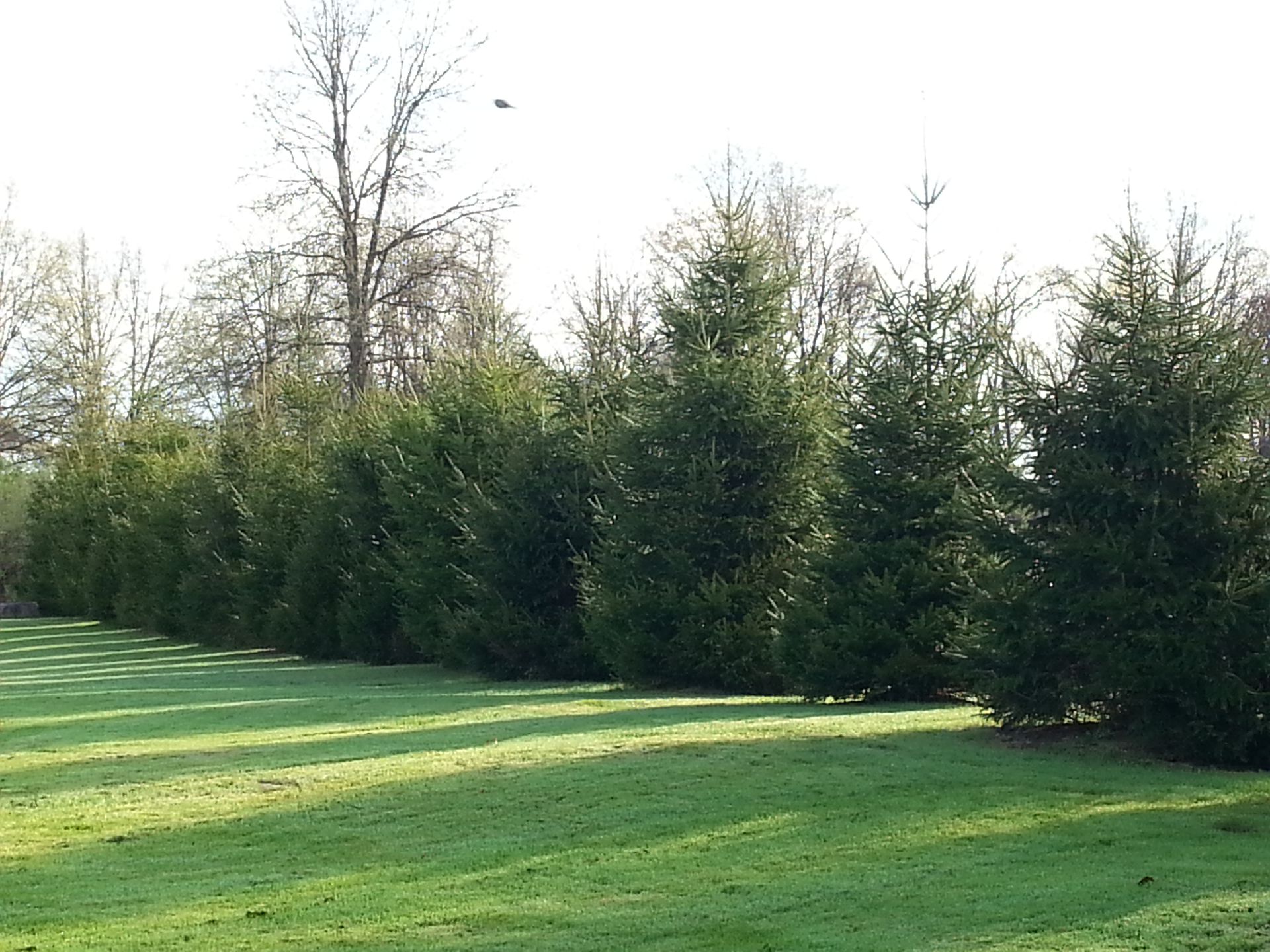How to Plant Evergreen Spruce Trees

Select the Proper Site Location
When deciding to plant Norway Spruce you will need to select a good location for the trees. Norway spruce eventually grow to 25-30ft. high with a wide spread so you should take this into consideration and plant these trees well away from your house or other outdoor structures. Most all evergreen trees prefer full sun and grow best in well draining organic rich soils. You should evaluate your soil and if it is heavily compacted clay, all shale stone or extremely wet you should consider adding at least a 1/2 yard of organic topsoil per tree to help get the tree growing in good soil. If your site location is wet you will need to raise the planting level higher and create a mound planting of the evergreen trees or choose another tree like Bald Cypress to handle the wet conditions.
Spacing Considerations
When spacing Norway Spruce you should think about how quickly you would like to screen off an area and block a view along your property line. Norway Spruce are an excellent choice because they have good deer resistance in the Hudson Valley. It is OK to space these trees 10 feet on center from each other. Yes they will grow into each other in a short amount of time but that is the point right? We want to create a solid green privacy wall. You should also consider planting at least 10 ft. off the property line to provide a buffer between you and your neighbors.

Installation of the a Balled and Burlap (B&B) Evergreen Tree.
When planting a b&b tree you will need to excavate a hole at least twice as wide as the root ball of the tree. The tree should be planted slightly higher than the existing ground by about 1-2 inches. Leave all of the roping and wire basket in place and do not remove them. Most b&b trees are freshly dug in the early spring and the roots that are left are probably not strong enough to hold all of the soil in place. The mistake that usually transpires is when a customer removes the wire basket and all of the soil falls away from the roots effectively killing the tree at that point.
Please leave the wire basket in place when you slide the tree into your planting hole. Overtime the wire basket will rust/rot away and the roots will punch through the wire and rotting burlap. Just think of how powerful roots are. Roots can damage a home's foundation, tear up concrete walkways, and destroy septic systems with ease. A little wire basket will not kill the tree.
Once the tree is in the hole you will need to remove roping that is wrapped around the trunk and cut away the top portion of burlap only. The top layer of burlap can act like a water wick drawing moisture from around the root ball so be sure to cut away the top exposed burlap. It is OK to leave the rest because it is buried in the soil.
Next amend the planting soil of your tree with a bag of planting soil and a few shovels of peat moss. If you have poor soil or heavy shale you will need to haul in that 1/2 yard of good topsoil per tree for an established successful long term planting. When soil is around the root ball be sure to use your foot and lightly compress (not stomping) the back filled soil around the root ball. This eliminates air pockets around the back filled soil and helps prevent the tree from drying out. With the left over excavated soil and sod use it to build up a rounded well around the base of the tree. This will help hold water. Then water your tree by following these watering instructions here.
